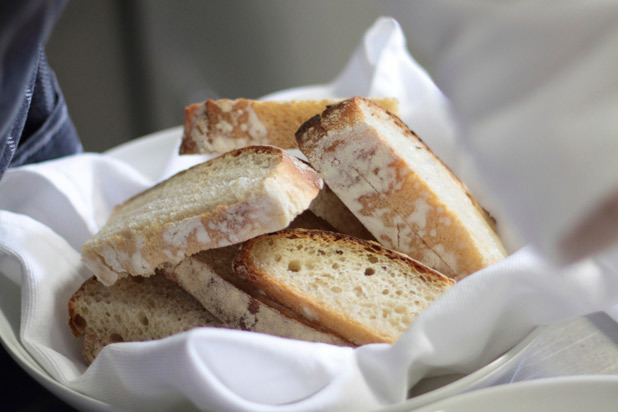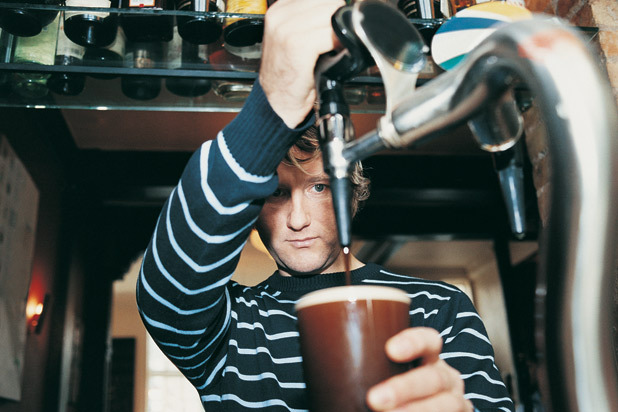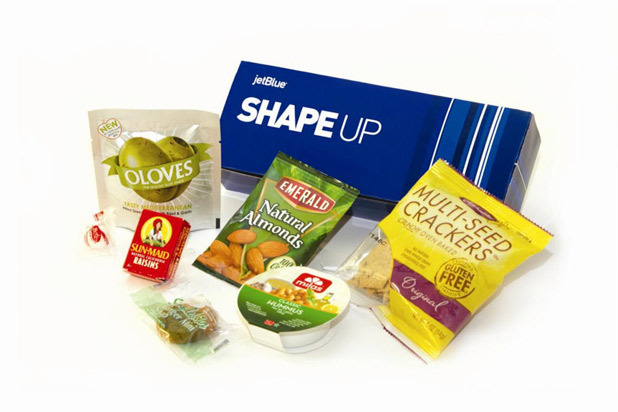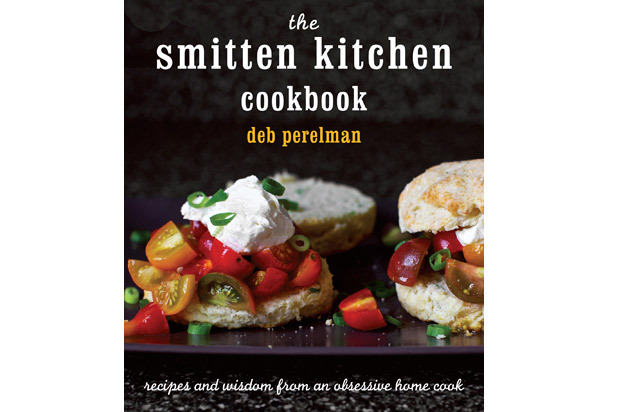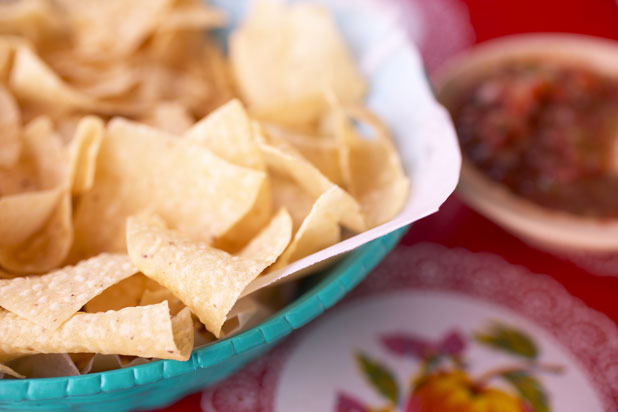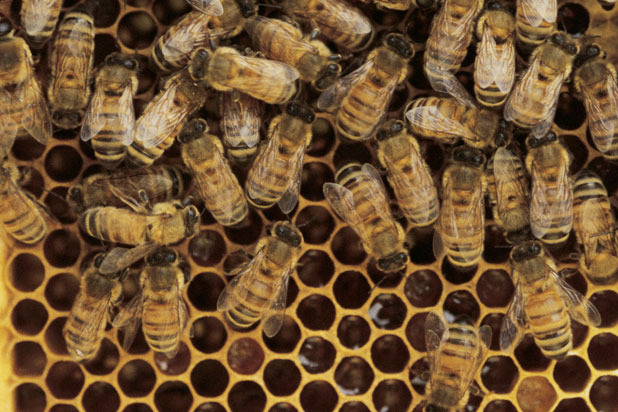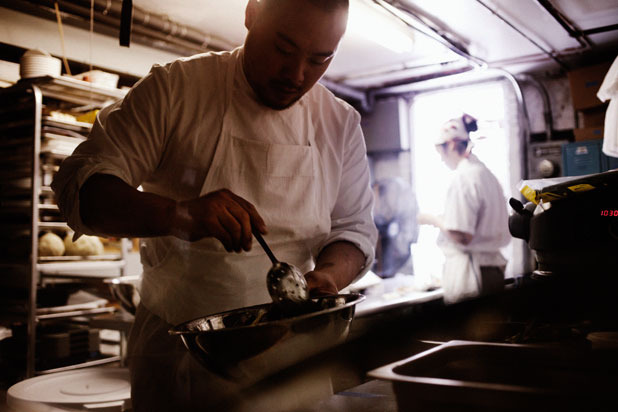Top Food Trend Predictions For 2013 Slideshow
The idea of charging for bread isn't new, it still stirs outrage in some diners and media personalities. Consider back in 2009, when the New York Post reported tariffs of $3 for bread and another $2 for butter at Company, in New York City, as just one of the "super sneaky charges" that "recession-hit restaurants" were "helping themselves to." Though he was called insane at the time by some, then New York Times restaurant critic Frank Bruni actually raised arguments in support of the idea. He may have had a point, or at least just been a bit before his time.
#15 Beer Cicerones
It used to be that the people who most made you feel inferior when you went out to eat and drink were those with a seemingly bottomless bank account and an endless vocabulary that they used to describe fermented grape juice. Beer was something you could feel pretty safe drinking ("I'm getting notes of... beer in this Bud light. You?"). Now, though, beer drinkers who are less concerned with mouthfeel than with buzz should be on the lookout for beer cicerones — beer experts who have gone through training regimens like The Cicerone Certification Program run by Ray Daniels, offering professional credentials for those who sell and serve beer. The Wall Street Journal recently identified Public House in Las Vegas, the West Virginia and Ohio Pies & Pints pizza chain, and Chicago's Publican as restaurants with cicerone-enhanced staffs. Sommeliers aren't the only ones who can make you feel like a rube these days.
#21 Healthier In-Flight Options
High-fiber, low-fat snacks are already available on many flights. And while it may not happen all at once, with chefs getting more involved (again) with the food being served on planes and at airports, look for some of the more socially conscious ones to be involved with healthier in-flight options.
#14 Beer and Wine Hybrids
"For those who can never decide between beer and wine..." expect to hear that intro with increasing frequency because beer-wine hybrids are making waves and winning awards. Conceptualized about 17 years ago at Coors Field, Blue Moon's Impulse (red) and Proximity (white) ales, which are 51 percent beer and 49 percent wine, will soon be hitting stores in all 50 states, according to Businessweek.
#12 Sea Beans
Another ingredient to be on the lookout for? Sea beans. Salty, crunchy, and great for textural variety and natural seasoning, sea beans (also called samphire and pousse pied) aren't new to the scene, but their appearance in grocery stores has been on the rise over the past few years. We're pretty sure that the plants, which are native to salt marshes and beaches in North America, Europe, South Africa, and South Asia, can be expected to have a mainstream moment in 2013.
#11 "Designer" Brand-Name Meats
"Designer" brand-name meats continue to crowd our menus and specialty butcher counters. Duroc, Berkshire, and Mangalitsa have practically become required name-dropping on menus at trendy restaurants across America. Look for more attention paid in the months to come to other heritage (or just unusual) breeds of pork (cue Ibérico fresco), beef, and lamb.
#10 More Bloggers to Cookbooks
The blog-to-cookbook thing has been done before (wassup, Julie Powell?), but expect the fact that Deb Perelman's The Smitten Kitchen Cookbook debuted in the number-two spot on The New York Times non-fiction best-seller list (and has stayed in the top five for eight weeks) to inspire 1) even more new food bloggers, and 2) even more deals for other food bloggers — though not necessarily with anywhere near as much success as Perelman has had (guys, don't forget she's been at this for quite some time!).
#9 "New" Cuts of Meat
You've by now heard of the tri-tip, the triangular muscle cut from the bottom sirloin that Californians have known about for decades. Look out for other "new" cuts of meat, a trend that has been sneaking up on the mainstream for a few years. As our friends over at RestaurantHospitality.com noted, cuts like "Denver steak" (cut from the fourth-most-tender muscle of the steer), "pork flat iron," and "teres major" (also referred to as a shoulder tender) may start popping up. They're sometimes a little chewier than more familiar hunks of animal flesh but usually have more flavor.
#1 Rise of the Pressure Cooker
If you're an avid TV food competition watcher, it's a moment you've seen with increasing frequency: Chef has little time to cook something that takes hours! Lightbulb goes off! Chef grabs pressure cooker! Chef struggles to close pressure cooker! Chef figures it out or another chef helps! Chef struggles to open lid! Chef's food that needed a long time to cook was done brilliantly in a short time! Whoohoo! It's a telling moment. Invented in the 17th century and first manufactured in the 19th, the pressure cooker is a somewhat forgotten and unappreciated piece of kitchen equipment that may be about to have another moment. Noted The Daily Meal's Cook editor Anne Dolce, "People are going to discover this awesome type of cooking equipment that's been around forever."
#3 Alternative Citrus
You may have begun to see Buddha's hand citron showing up more frequently in your local supermarket. Expect the mainstreaming of other "new" or alternate citrus. Pomelo, which isn't exactly obscure, still isn't well-known by most Americans, and is finding its way into commercially produced juice drinks. Same with satsuma, which seems to be on every menu in New Orleans right now. Finger limes began showing up in 2009 after the native Australian fruit started being grown in small quantities in California. The translucent vesicles add an interesting textural pop and flavor to dishes and drinks, enough distinction to give this micro-citrus the appellation "the caviar of citrus." Expect other examples like calamansi, also called calamondin, and bigger, sweeter, and, well, just different kinds of hybrid citrus.
#20 Eastern Europe as Culinary Destination
There are better and better restaurants, often updating local culinary traditions, usually with friendly prices, in various parts of Eastern Europe and the Baltic States — for example, in Croatia, Slovenia, Slovakia, Hungary, Russia, and Estonia (as noted in The Daily Meal's 101 Best Restaurants in Europe).
#16 Chips and Salsa...for a Price
Even more obnoxious and impossible to believe than the idea of restaurants charging for bread? Mexican places charging for chips and salsa. As any Texan with half a brain will tell you, only restaurants in the Northeast that don't know how to make good chips and salsa (New York City???) in the first place would dare charge you for the privilege of eating them. Good chips and salsa are a god-given right. "And of course they're free, don't be stupid." Chalk it up to the Mexican cuisine trend continuing to mainstream, with well-known chefs who are used to charging for everything (as at Empellón Cocina in New York), chalk it up to the bad economy, chalk it up to whatever you like, but expect to see more restaurants putting a price tag on this Mexican-restaurant essential. And as a matter of fact, it has happened in Texas. As Robb Walsh noted a few years ago in the Houston Press, even though charging for chips and salsa in Texas "is like charging for bread and butter in France," at least one place — Yelapa Playa in Houston — did exactly that. Other restaurants should note that they've since closed their doors.
#13 Smoked Everything
Smoked meat, smoked vegetables, smoked breakfast, dinner, and dessert, smoked booze — look out for lots of smoke in 2013. We agree with the prediction Julia Moskin offered in The New York Times: expect innovative use of smoke on your plate and in your glass (Chicago's The Aviary has served a smoked Rob Roy).
#4 Queens Is the New Brooklyn
Even as the Brooklyn food scene races along its path to world domination, watch out for Queens... the new Brooklyn. Astoria has long been known for its great restaurants, representing just about every "ethnic" cuisine known to humankind, and now with M. Wells 2.0 leading the way, there's a burgeoning new-style restaurant scene in Queens as well. Long Island City is arguably much more convenient and uncrowded than anywhere you can get on the L train...
#5 Brooklynization of the World
Engage in the Manhattan versus Brooklyn debate. Argue that the artisanal Brooklyn food movement is really an extension of Portland, Ore.'s artisanal food movement. Invoke your hatred for hipsters (seriously, yes, they can be annoying, but can we maybe stop tossing around that word as an adjective and a de facto explanation of why you hate something?). As the Brooklyn Eagle recently noted, "A new report released by the Brooklyn Chamber of Commerce shows that Brooklyns 'food chain' supermarkets, restaurants, gourmet food shops, and food makers accounts for 16 percent of businesses in Brooklyn and 12.5 percent of Brooklyns private sector jobs." The food business is actually good for the local economy, then a lesson we expect other communities with a young, involved, creative, imaginative (if occasionally annoying) food-loving population to learn. Look for Little Brooklyns everywhere from Boston (gasp!) to Miami, St. Louis, Dallas, and, hey, let's not forget that Oregon city some people think inspired it all.
#2 High-End Counter Dining
Credit sushi chefs, Joël Robuchon, David Chang, José Andrés, César Ramirez, or whomever else you'd like, but you have to recognize that high-end counter dining is having a moment. In fact, it's veering close to cliché. Don't get the wrong idea: As with tasting menus and the chef's tables in the kitchen, there's definitely a place for counter dining. But as more and more serious restaurants open with counter seating and pricey set menus (like Atera in Manhattan and Brooklyn's Blanca), expect the trend to jump the shark's fin soup.
#19 Urban Honey
Bees have been disappearing at an alarming rate around the world. In the U.S., the phenomenon was first observed in 2006 by beekeeper David Hackenberg, who testified to Congress about a problem by then termed Colony Collapse Disorder (CCD). No longer was it being chalked up to bad beekeeping; the same rapid, catastrophic decline was occurring in hive populations in 35 states. Attention to the problem may not have solved it, but it has refocused people on the importance of bees to crops, and led to an increase in popularity of beekeeping. You've started to hear about restaurants and hotels keeping their own hives to make honey in-house. Last year, Food & Wine singled out Carmel Valley Ranch in California for the practice, and it was recently noted that Germany's Hamburg Marriott and Renaissance Hamburg were serving honey cultivated from their colony of nearly 60,000 honey bees. (Haven Restaurant in Houston was making honey, but they were the victim of hive theft this past March, when unidentified thieves made off with their bees one morning at dawn!). More restaurants will move beyond tending their own gardens to actually keep beehives out back (or on the roof) to supply their chefs with urban honey.
#18 Lardo is the New Pork Belly
Let's face it, bacon is a fact of life, not a trend. It's not going anywhere. (Now that it's in everything from chewing gum to shampoo, everyone's going to just walk around smelling like the damned stuff.) Same with pork belly: not going anywhere. But what's the next pork belly? What's the next pork-based product that everyone is soon going to be obsessing over? Pigs' ears, pigs' feet, and pigs' tails all have a certain cachet, but they involve too damn much cartilage to ever mainstream. So here's a somewhat understated — and easy to eat — form of pork to be on the lookout for: lardo, which is a (mostly) Tuscan specialty of fatback cured with herbs and spices, then thinly sliced like prosciutto or beaten into a kind of coarse-textured pork butter. Chef Michael White had Yelpers and the food media elite alike falling over themselves with praise a few years ago, when he started serving "Ricci" ("rich ones") at his Marea in Manhattan — a sea urchin crostini draped with lardo and finished with sea salt. René Redzepi, who cures his own from Danish pigs, adds it to toast topped with wild mushrooms and oysters at Noma. Matt Molina lets it melt lightly onto pizza at Mozza in L.A. We're waiting for the chocolate-lardo truffles and the lardo toothpaste. Probably not far behind.
#8 Fast Food Mashups
Last year's Doritos Locos taco success at Taco Bell begs the question of why more fast food franchises don't team up for world domination. Pulling off the Doritos Locos taco couldn't have been harmed by the fact that the Frito-Lay company was a subsidiary of the PepsiCo Corporation, also Taco Bell's former parent company, but Doritos and Taco Bell melding into one successful menu item makes you think that more junk food-fast food hybrids could tap into America's sweet spot for all things not so good for you (you know Cool Ranch tacos are on their way, right?). Whoppers layered with Lay's potato chips? Big Macs gone Luther Burger via Krispy Kreme or Cinnabon?
#7 Korean Inspiration in our Kitchens
David Chang of Momofuku (etc.) remains one of the hottest, most influential chefs in America. But he's hardly the only culinary figure of Korean ancestry who's making waves in the food world today. Is it the strength of Korea's food traditions or its cultural attitudes or something in the water? Is it all that kimchee? For whatever reasons, we can't help noticing that there are ever more particularly creative chefs who share Korean roots. Consider, for example, L.A. food truck maven Roy Choi and his New York counterpart Edward Song, who between them have made Korean tacos a part of America life. Then there's Corey Lee, former chef de cuisine at The French Laundry and now boss of his own acclaimed Benu in San Francisco; Hooni Kim, whose Danji in Manhattan is the country first Korean place to win a Michelin star; "Iron Chef" contestant Rachel Yang of Revel and Joulein Seattle; "Kimchee Chronicles" star and cookbook author Marja Vongerichten (wife of you-know-who)... And it's not just in America: transplanted Korean-American chef Judy Joo runs the dining room at the Playboy Club in London and is the latest "Iron Chef UK." Chef Sang-hoon Degeimbre of L'Air du Temps in Belgium has earned a place on our own 101 Best Restaurants in Europe. Clearly these chefs are doing something right, and we can almost certainly look forward to more innovation — and great cooking — from the sons and daughters of Korea in the future.
#6 Eggs In Appetizers
It's one thing to go to a ramen shop and see an egg nestled amidst the noodles, or to find a burger topped with a fried egg at a French bistro. But these days it seems that there's at least one egg-adorned appetizer on just about every restaurant menu. And no, not for breakfast. Dinner menus feature eggs that are deviled, Scotch, and even a thousand-year old; they grace salad, soups, and pasta. They're added to meat dishes, too (at The Dutch in New York City, an egg comes with the Korean-style hangar steak). What's next? Egg-topped omelettes? Chicken, quail, duck — heck, it wouldn't completely surprise you to see ostrich and emu eggs, too. Look for this trend to reach eggpic proportions in 2013.
